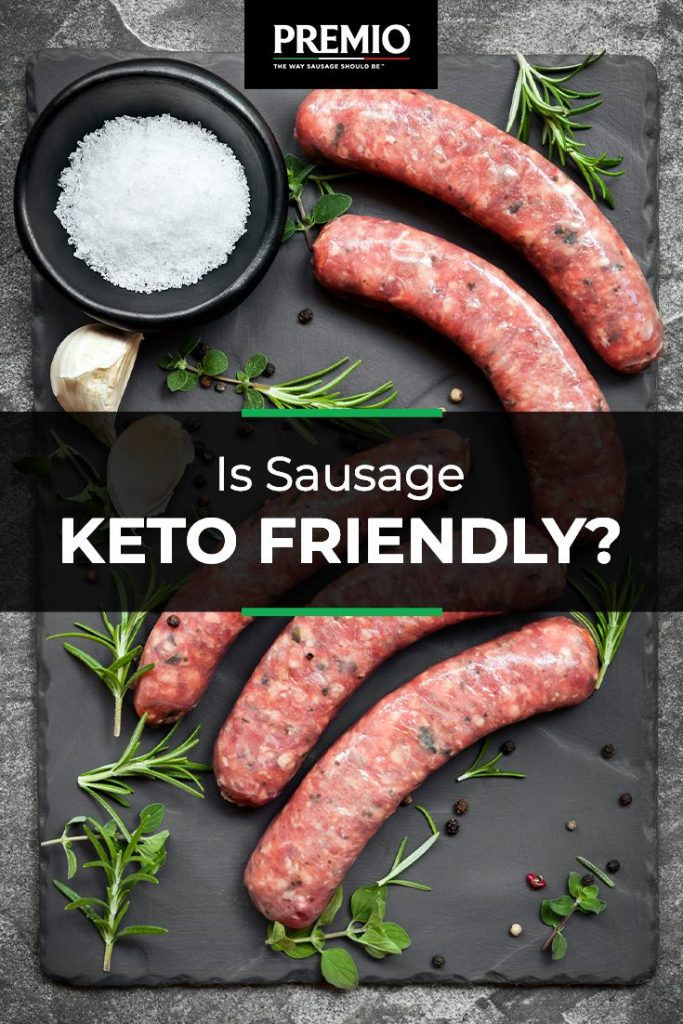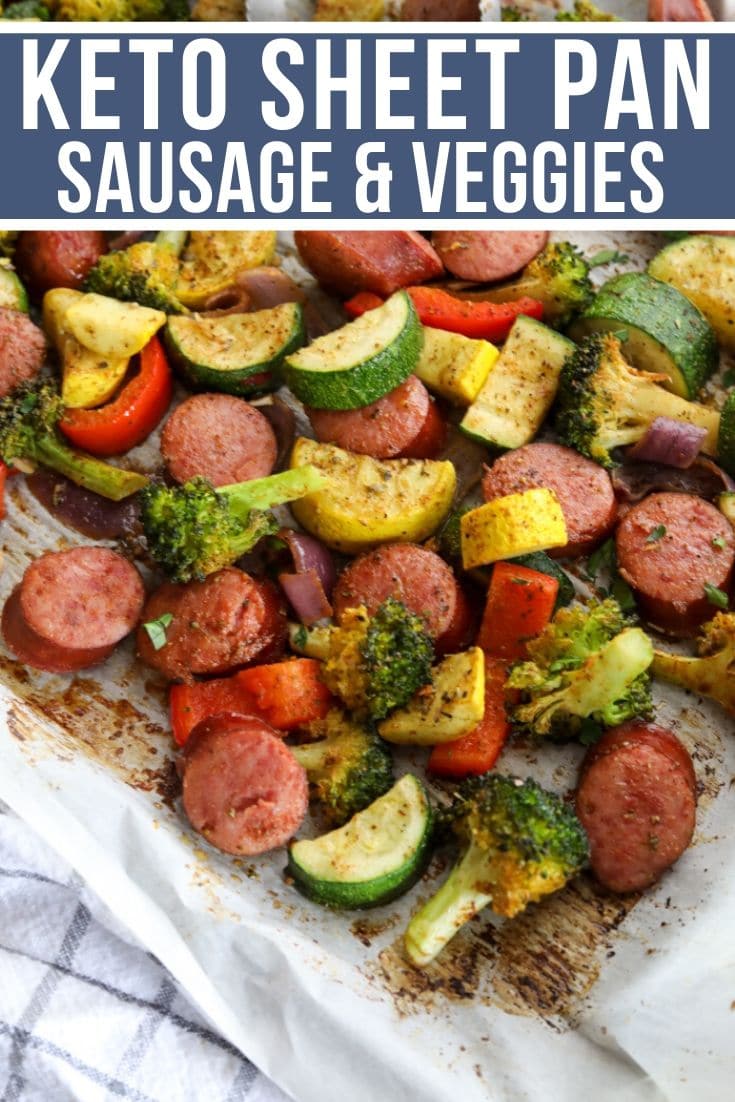When one thinks of sausages in the context of a keto diet, it’s often a battle between cravings and nutritional content. Would you believe that certain sausages can actually fit snugly into the macronutrient ratios required for a ketogenic lifestyle? Surprisingly, not all sausages are the keto diet’s adversaries some might assume.
The keto diet, representing a significant pivot from traditional high-carb meals, emphasizes low-carb and high-fat intake. Historically, sausages have ranged widely in carb content depending on fillers and additives used. Some artisanal or carefully chosen store-bought varieties can be quite low in carbs while still maintaining that robust flavor, making them suitable for keto enthusiasts.

Understanding the Keto Diet
The ketogenic or keto diet focuses on high fat, moderate protein, and very low carbohydrate intake. This diet helps the body enter a state called ketosis, where it burns fat for fuel instead of carbs. Many people follow it for weight loss and improved health.
In ketosis, the body produces ketones, providing an alternative fuel source for the brain. Cutting carbs drastically is essential for achieving this state. It’s important to monitor food intake carefully to stay in ketosis.
The keto diet involves a lot of healthy fats like avocado, oils, and nuts. Protein sources such as meat, eggs, and cheese are also important. Carbohydrates are limited to vegetables and some low-carb fruits.
Besides weight loss, the keto diet may help improve blood sugar and insulin levels. Many people report feeling more energetic and mentally focused. However, it requires a strong commitment and careful planning.
The Role of Protein in a Keto Diet
Protein plays a crucial role in any diet, and the keto diet is no exception. It helps with muscle repair and overall body function. Balancing protein intake is key to achieving ketosis.
While the keto diet is high in fat, moderate protein is important to prevent muscle loss. Eating too much protein can kick you out of ketosis because excess protein converts into glucose. It’s essential to find the right balance for your needs.
Common protein sources for a keto diet include meats, fish, and eggs. High-quality protein keeps you feeling full and supports your body’s needs. Vegetarians can turn to tofu and tempeh for their protein fix.
For those on a keto diet, tracking macronutrient intake can be very helpful. Many use apps to ensure they stay within their protein limits. Monitoring helps maintain ketosis and achieve health goals more effectively.
Protein Needs and Ketosis
Understanding your protein needs is critical for staying in ketosis. Overeating protein can lead to gluconeogenesis, where protein converts into glucose. Each person’s protein needs vary based on activity level and body composition.
Consulting a dietitian can help tailor your protein intake to your specific needs. This professional assessment ensures you don’t consume too much or too little. Personalized plans make sticking to the diet easier.
Tools like food diaries and nutrition apps provide valuable data. These resources make tracking macronutrients straightforward. They help you identify patterns and adjust your diet as needed.
Best Protein Sources for Keto
Not all protein sources are created equal, especially on a keto diet. Opt for high-quality, low-carb options such as grass-fed beef, free-range eggs, and wild-caught fish. These sources provide essential nutrients along with protein.
Poultry, like chicken and turkey, also offer excellent protein without too many carbs. They are versatile and can be cooked in various ways. Include them in your meal rotation for variety.
For those looking for plant-based options, consider tofu and tempeh. These can be seasoned and cooked to add great texture and flavor to meals. They offer a good protein punch without the carbs.
How to Incorporate Protein into Keto Meals
Incorporating protein into keto meals can be delicious and simple. Focus on combining protein with healthy fats, like cooking chicken in olive oil. Salads with grilled meat and avocado also make a great option.
Eggs are a versatile staple in keto meal planning. They can be scrambled, boiled, or used in omelets loaded with vegetables. Egg-based dishes are easy to prepare and fulfilling.
Including fatty fish like salmon or sardines adds omega-3s along with protein. Bake, grill, or steam them and serve with a side of leafy greens. These meals support both your protein and fat intake goals.
Breaking Down the Nutritional Profile of Sausages
Sausages come in various types, each with a unique nutritional profile. They typically contain a mix of meat, fat, and spices. However, the carb content can vary widely based on additives.
Most sausages are rich in protein, which is beneficial for muscle repair and growth. Fats found in sausages can provide a good energy source, especially for those on a keto diet. Yet, it’s essential to check labels for hidden sugars and fillers.
When examining sausages, you’ll find that they also contain essential vitamins and minerals. Iron and vitamin B12 are common, contributing to better blood health. These nutrients can support overall wellness.
Here’s a quick comparison of nutritional values in different sausage types:
| Sausage Type | Protein (g) | Fat (g) | Carbs (g) |
|---|---|---|---|
| Beef Sausage | 10 | 15 | 1 |
| Chicken Sausage | 12 | 10 | 2 |
| Pork Sausage | 9 | 20 | 3 |
Sausages: Carbohydrates and Additives to Watch Out For
While sausages are a popular protein choice for many, carbohydrate content can vary significantly. Some sausages have fillers and additives that increase the carb count. It’s crucial to read labels carefully.
Common additives like breadcrumbs, sugar, and starches can spike the carb content. These ingredients are often used to bind or flavor sausages. Look for sausages labeled as low-carb or keto-friendly to avoid unwanted carbs.
Artificial preservatives and flavor enhancers can also be found in many sausages. Ingredients such as sodium nitrate and MSG don’t add carbs but have other health considerations. It’s best to choose sausages with minimal additives.
Here’s a list of additives to watch out for in sausages:
- Sugar
- Bread crumbs
- Dextrose
- Corn syrup
- Potato starch
In addition to checking for carbs, verify the sausage is free from hidden sugars. Sugars can hide under different names like dextrose or maltodextrin. Avoid these to keep your diet on track.
Choosing organic or artisanal sausages can help mitigate these risks. These products often contain fewer additives and are made with more natural ingredients. They offer a cleaner, healthier option.
Selecting Sausages for Your Keto Diet
Choosing the right sausage for a keto diet means focusing on low-carb, high-fat options. Check labels for hidden carbs and additives like sugar and breadcrumbs. Opt for sausages with minimal ingredients.
Look for sausages made from high-quality meats such as beef, pork, or chicken. These types typically have beneficial fats and proteins. Organic or grass-fed options are even better.
Here are a few keto-friendly sausage choices:
- Pork sausage
- Beef sausage
- Chicken sausage
- Turkey sausage
Selecting artisanal or locally made sausages can also be a smart choice. These products often have fewer additives and more natural ingredients. They are generally lower in carbs and healthier overall.
When shopping, consider sausages from brands that cater to keto or low-carb diets. These options are specially formulated to fit within your carb limits. They make sticking to your diet easier and more flavorful.
Online retailers and specialty stores are good places to find keto-friendly sausages. Brands that highlight their keto-compliant products typically provide better choices. Careful selection can help you maintain ketosis and enjoy your meals.
Integrating Sausages into Your Keto Diet: Meal Ideas
Integrating sausages into a keto diet can be both delicious and easy. Start your day with a sausage and egg scramble. It’s a quick, high-protein breakfast that keeps you full.
For lunch, consider a sausage salad. Combine sliced sausage with leafy greens, cheese, and avocado. Drizzle with olive oil for added healthy fats.
Dinners can be just as simple. Grill sausages and pair them with roasted vegetables. It’s a satisfying meal low in carbs and packed with nutrients.
Sausages can also be used in keto-friendly soups and stews. Add them to a broth with low-carb veggies like spinach and zucchini. These dishes are both hearty and hydrating.
For quick snacks, sausages are a great go-to. Cook and slice them ahead of time for easy access. Pair these slices with some cheese or nuts for a balanced snack.
Experiment with these meal ideas to keep your keto diet enjoyable and varied. Here’s a list of more meal ideas:
- Sausage and cauliflower rice stir-fry
- Sausage-stuffed bell peppers
- Sausage and spinach frittata
- Cheesy sausage and broccoli bake
Trying out different recipes can make sticking to the keto diet more fun. Plus, these meals are not only nutritious but also delicious. Your taste buds and waistline will thank you.
Key Takeaways
- Some sausages can be keto-friendly with low carbs and fewer additives.
- Check labels for hidden sugars or fillers in sausages.
- Sausages high in fat and protein support a keto diet.
- Opt for organic or grass-fed meat sausages.
- Maintain ketosis by choosing the right sausage types.

Frequently Asked Questions
When it comes to sausages and the keto diet, there are many questions. Here, we answer a few common ones to help you make informed choices.
1. What types of sausage are best for a keto diet?
The best sausages for a keto diet are those made with high fat, low carb ingredients. Look for options like pork or beef sausages that have minimal fillers and no added sugars.
Opting for organic or artisan-made sausages can ensure quality ingredients without unwanted additives. Always check nutrition labels to make sure the carb content aligns with your dietary goals.
2. Can chicken sausage be part of a keto diet?
Yes, chicken sausage can be included in a keto diet if it has low carbs and no added sugars. It’s lighter in fats compared to pork sausage but offers good protein content.
Select chicken sausages that are labeled as keto-friendly or low-carb. Pairing them with fatty sides such as avocado can help meet your fat intake goals while staying within ketosis.
3. How do I know if my sausage has hidden sugars?
The easiest way to check for hidden sugars is by carefully reading the ingredient list on the package. Words like “dextrose,” “maltodextrin,” and “corn syrup” indicate added sugars.
Nutritional labels also provide information on sugar content per serving size. Opting for plain, unseasoned sausages often means fewer hidden additives overall.
4. Are store-bought sausages usually suitable for a keto diet?
Store-bought sausages can vary in their suitability for a keto diet due to different brands and recipes. Some may come with unwanted fillers or higher carbohydrate content.
Your best bet is to go for products labeled specifically as low-carb or ketogenic-friendly. Checking nutrition facts and ingredients helps you avoid those not adhering to your keto requirements.
5. How can I incorporate sausages into my daily meals while maintaining ketosis?
Sausages can easily be integrated into various meal plans that hold up well under ketogenic rules. Try using them in breakfast bowls with eggs and vegetables or mix them into salads for lunch.
You can also grill or roast sausages alongside low-carb veggies such as zucchini and broccoli for dinner options. This flexibility in meal planning makes sticking to your dietary guidelines easier while enjoying flavorful dishes.

Conclusion
Incorporating sausages into a keto diet can be a flavorful and nutritious option. By selecting the right types, checking labels, and avoiding hidden sugars, sausages can be a valuable addition to your ketogenic journey. Choose wisely to maintain ketosis and enjoy your meals.
Remember, variety and quality are key to a successful diet. Opting for high-fat, low-carb sausages, and mixing them into balanced meals can make keto dining both satisfying and enjoyable. Stay informed and make each meal count.
